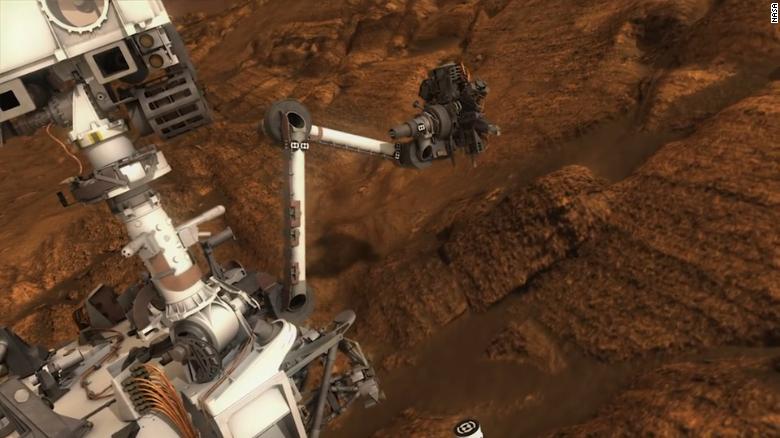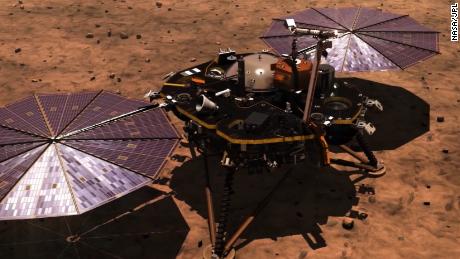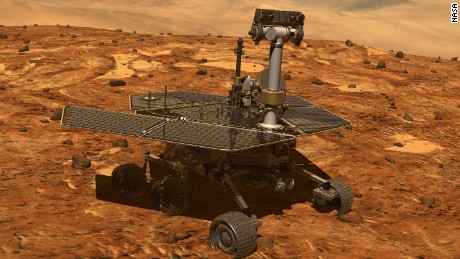(CNN)NASA wants to accelerate its timeline for the next moon landing while keeping its eyes on a bigger prize: Mars.
The space agency aims to send astronauts to Mars by 2033, NASA administrator Jim Bridenstine said at a Tuesday congressional hearing.
"We can move up the Mars landing by moving up the moon landing (to 2024)," Bridenstine told the House Committee on Science, Space and Technology. "We need to learn how to live and work in another world. The moon is the best place to prove those capabilities and technologies. The sooner we can achieve that objective, the sooner we can move on to Mars."
The budget for the accelerated timeline still needs to be approved
The original return to the moon was scheduled for 2028, and it's unclear if NASA will be able to meet the new deadline. The rocket that Boeing is building for the moon mission -- called the Space Launch System or SLS -- has experienced delays.
NASA has already spent at least $11.9 billion on the SLS, which was supposed to be ready by December 2017. The 2024 target would require a drastic acceleration in the spacecraft's development.
Committee chair Rep. Eddie Bernice Johnson said the Trump administration needs to clarify exactly how much the ramped-up timeline will cost and how it plans to pay for it, especially given "the deep cuts it has made to the rest of the federal R&D agencies' budgets."
"I would like America to continue to strive to achieve the challenging and inspiring goal of landing astronauts on Mars, and if the Moon is an essential interim step, then I would support going there too," Johnson said in a statement to CNN. "However, I am not prepared to cannibalize the rest of NASA's program or force the agency into taking foolhardy risks or making short-sighted plans simply to meet an arbitrary deadline."
NASA submitted a budget request to Congress about three weeks ago, but Bridenstine said he would make an updated request, reflecting the accelerated timeline, by April 15.
It's part of Trump's push for space exploration
In December 2017, President Trump signed Space Policy Directive 1, which called for NASA to send humans to the moon for the first time since 1972 for "long-term exploration and use" and missions to other planets.
Vice President Mike Pence said at a National Space Council meeting last month that the White House aims for NASA to put astronauts back on the moon by 2024. That would be Trump's last year in office if he is re-elected.
"Some will say it's too hard, it's too risky, it's too expensive. But the same was said back in 1962," Pence said last month.
Bridenstine said on Tuesday that it's "Important for this country to focus on finding life" on other planets.
A mission to Mars would take at least two years
A round-trip voyage to the Red Planet would last at least two years, Bridenstine said.
Depending on their orbits, Mars is at least 33 million miles from Earth. By contrast, the moon is only about 239,000 miles -- several days' journey -- from our planet.
CNN Films' 'Apollo 11'
Explore the exhilaration of humanity's first moon landing through newly discovered and restored archival footage. Watch the TV premiere of this documentary Sunday, June 23 at 9 p.m. ET/PT.
Earth and Mars are on the same side of the Sun about every 26 months, and these are the best windows to depart, NASA spokeswoman Cheryl Warner said. Traveling to Mars would take six to nine months, depending on when the crew leaves.
The quickest way to get to Mars is via the Hohmann Transfer orbit, which requires the least energy and is considered the most efficient.
NASA robots have been on Mars for decades
To date, the US and the Soviet Union are the only countries to have successfully landed a spacecraft on the Red Planet.
The US has landed eight spacecraft on Mars, including the beloved Opportunity rover, which concluded a 15-year mission earlier this year.
Most recently, NASA 's InSight landed on Mars in November 2018. InSight traveled 301,223,981 miles through space to explore Mars' deep interior, which we know the least about.









